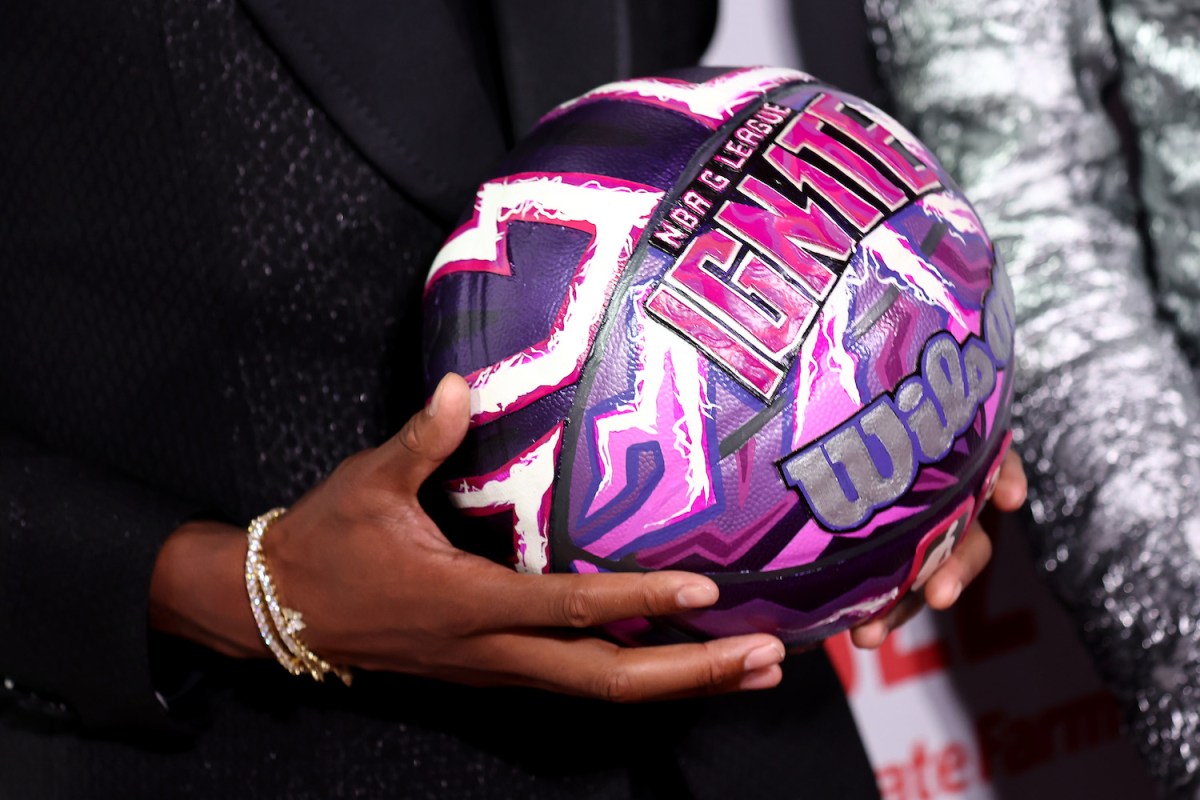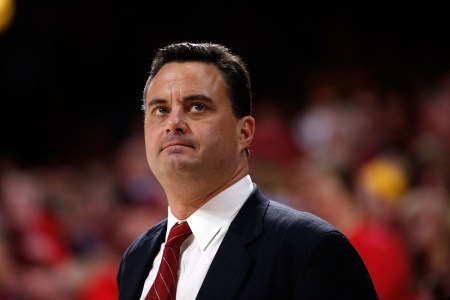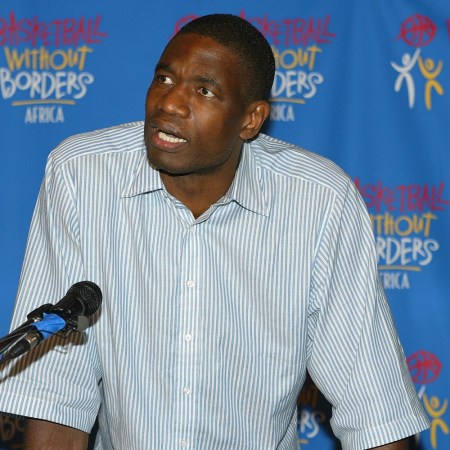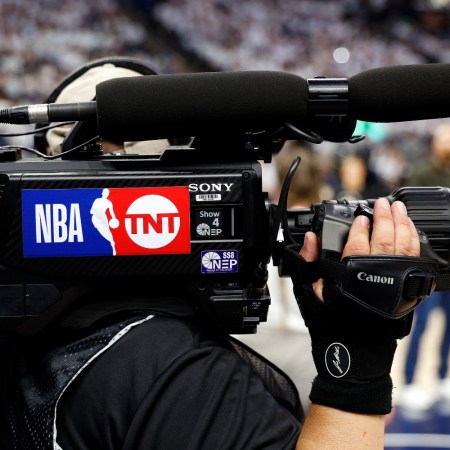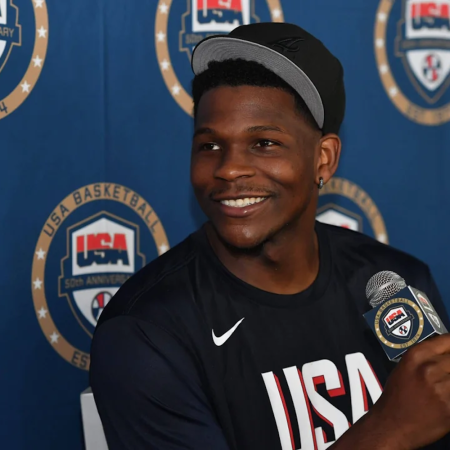Five and a half weeks ago, on March 10, Dink Pate, a 6-foot-8, 194-pound shooting guard from Dallas, Texas, celebrated his 17th birthday. Yesterday, he signed a two-year contract with the NBA’s G League Ignite and became the youngest professional basketball player in the history of the United States.
“The whole idea of why I started playing basketball was to be a pro,” said Pate, a five-star recruit, per ESPN. “G League Ignite brings me one step closer to my dream. It’s all about the development of my game…I’m going to keep working to the best of my ability to prove that I can play in the NBA.”
NCAA Hoops Panel: End One-and-Done and Ban Cheaters for Life
The Commission on College Basketball issued its recommendations Wednesday.Dink Pate is not eligible for the NBA Draft until 2025. He’ll graduate high school on June 2, a year early already after completing both his junior- and senior-year coursework. He enrolled in extra online courses to achieve the feat. “It was a lot of work,” he said, but there’s plenty more to come. Getting school out of the way was only a means of freeing up time to focus on basketball.
Ignite is a developmental team based in Henderson, Nevada, which is about a half-hour southeast of Las Vegas. The team is part of the NBA’s G League and plays additional exhibition games against international opponents. According to the NBA, the squad is made up of “elite players who are eligible for the NBA Draft as well as NBA and NBA G League veterans who serve as mentors to the team’s young talent.”
Pate joined Ignite instead of a top college basketball program. According to 247Sports, he received offers from the likes of Kansas, Indiana, Georgetown, Texas and dozens more schools. He said he was most likely to attend either Alabama or Arkansas if the Ignite opportunity did not present itself.
“Instead,” wrote ESPN, “Pate will continue his education by enrolling in online classes this summer at Arizona State through a program created and funded by the G League that allows players to work toward a college degree for up to 10 years after they retire, something his mother, an educator, insisted on.”
Dink Pate played last season at L.G. Pinkston High in Dallas, according to The Athletic. There, he averaged 20.3 points per game, on his way toward drawing comparisons to star backcourters like the Oklahoma City Thunder’s Shai Gilgeous-Alexander, NBA Hall of Famer Tracy McGrady, and former NBA All-Star Penny Hardaway, whom Pate counts among his favorite players of all time, even though he was born when Hardaway’s career was coming to a close. He’s turned to YouTube highlights for enjoyment of Hardaway’s talent.
The G League program is a pathway toward the NBA set up by the league and recently enhanced in direct response to highly touted high schoolers jumping to professional leagues overseas for immediate paychecks. Otherwise, they would have had to attend college for at least a year, before turning 19 years old and becoming eligible for the NBA Draft. That arrangement has led to a number of talented ballers going “one-and-done,” awkwardly abandoning their NCAA teams after a single season.
“While some college basketball fans and coaches appreciated the chance to see top stars at least for a year, others rued the transitory nature of the players’ stays on campus,” wrote The New York Times in a 2018 article about the G League’s new financial offerings to high school grads. “The NBA justified the [19-year] age limit by saying it was concerned that recent high school graduates were not ready for the rigors of the NBA and life as adults.” The league reportedly also hoped the rule would keep exploitation-minded adults, like agents and sneaker-company recruits, away from impressionable teens. “David Stern, the commissioner until 2014, wanted an age limit of 20 but compromised with the players’ union to make it 19,” wrote The Times.
So, G League Ignite is basically in place to subvert the NBA’s own age rule about draft eligibility. And with players like Dink Pate a part of it, now there are guys of minor status — at least a full year younger than the famous busts who jumped directly from high school to the NBA — who can be called “professionals.”
But don’t label this “exploitation.” The NBA’s got that covered, saying Ignite “focuses on high-level competition and accelerated on-court development for players who are beginning their professional careers [while providing] life skills training that includes financial literacy education, community service involvement and scholarship opportunities.” Yes, there’s an argument to be made that a person should not be denied a right to earn a living when fully capable. In other words, if they’re good enough to be pros, they should be. However, there’s something about the financial motivations of the NBA and the disruption of its own policies that makes all this a bit hard to digest.
Where does it end? Perhaps, in a way, with Pate. It’ll be tough for anyone younger than him to ever graduate high school and become eligible for G League Ignite. Pate’s long-term success and that of others who’ve recently entered the program prior to him will set a kind of barometer in the coming years. Hopefully, at the very least they become secure and well-adjusted adults, productive in a professional area that brings them the most personal satisfaction possible — something a number of “prep-to-pro” players have, unfortunately, struggled to become.
Whether you’re looking to get into shape, or just get out of a funk, The Charge has got you covered. Sign up for our new wellness newsletter today.
